- Home
- John Scalzi
Your Hate Mail Will Be Graded: A Decade of Whatever, 1998-2008 Page 11
Your Hate Mail Will Be Graded: A Decade of Whatever, 1998-2008 Read online
Page 11
Now, if Rowling had lardered the Harry Potter books with tales of Dumbledore’s heterosexual relationships, and had done numerous interviews about how in his younger years he cut a swath through witches and mugglettes alike, leaving a trail of women raving about his wand-work, then we would have reason to discard a latter-day revelation of his gayness; it would be patent nonsense. She did neither. Rowling’s outing of Dumbledore might be surprising, but it’s not inconsistent with what we know of the text or the character.
Rowling is getting some whacks because she never explicitly stated Dumbledore’s sexuality within the books themselves, which is fair enough, although I think it’s a little silly. Authors are not obliged to outline every detail about a character, and from what I know of Dumbledore (I haven’t read the books themselves because the little I’ve read of Rowling’s prose style doesn’t set me aflame; I stick to the movies) it would be entirely in character for him to be circumspect about the topic of his sexuality, both in dealing with Harry and his pals, and in the clearly rather conservative world of magic. Rowling’s made it pretty obvious that in her Potterverse it’s hard to be “out” when you have an alternate lifestyle (cf. that Lupis dude), and there’s no indication that the world of magic is any more gay-friendly than it is werewolf-friendly. She built a world that has certain rules; characters in that world live by those rules. Those rules aren’t necessarily the same rules as our world lives by.
Going back to Rothstein, the best you can say for his argument is that it notes that Dumbledore doesn’t have to be gay for many of the influential events of his life to have had an effect on him. To which the correct response is to say, yes, well. And this would be different from the lives of actual gay people exactly how? We go through any number of events in our lives without our sexuality front and center—it would make sense an author would model a character similarly. But it doesn’t mean that at the end of the day that sexuality doesn’t matter to who the character is.
Dumbledore’s gay: He was written that way. As a reader, you may not need to know it, or may even feel it’s essential to what you see as his purpose, any more than in the real life you’d need to know if your mailman were gay, or your bank teller or your local librarian, or would see their sexuality as essential to how you relate to them even if you did. But what you know, and what these people know about themselves— and what an author knows about his or her characters, not to mention what the characters know about themselves—are separate things. And what they know matters to who they are.
So, no. Rowling’s not mistaken about Dumbledore. Rothstein, however, is.
BEST CHEESE OF
THE MILLENNIUM
Processed Cheese, or, as it’s vulgarly called, American cheese. Hey, don’t blame the messenger. I’m not the one who is forcing humanity to eat two billion pounds of the orange stuff annually. I’m just telling you that we do. Anyway, cheese is hardly the thing to get snooty about. Any product that is made intentionally to both smell like feet and be put in your mouth, well, honestly. How much respect should it get?
Cheese is in fact the first and best example that a great many of humanity’s current culinary selections are based on bad judgment and/or someone drunkenly daring someone else to eat something entirely inappropriate. In the case of cheese, the going story (found on two entirely different cheese advisory sites, so you know it must be true) was that some 4,000 years ago, an Arab was crossing the desert with some milk in a pouch. What sort of idiot goes on a long journey across a desert with milk in a pouch? Well, see. This is the “bad judgment” part.
As the immortal song tells us, “in the desert, the heat was hot,” so by the time the Arab fellow decided to have a pull off his udder squeezings, the stuff had fermented and became two separate and entirely smelly objects. The first was the runny, armpit-smelling liquid called “whey” (think of the ooze that floats on top of your sour cream before you stir it up—sour cream, incidentally, yet another dare food from the land of dairy), and the other, a lump of disgusting goo which was the first cheese on record.
Any sane person would have flung the pouch of curdled mommy juice as far from their person as it is possible to fling it. But we’ve already established the fact we’re dealing with a fellow who’s a few camels short of a full caravan. So this genius eats the goo and drinks the armpit liquid. The cheese flacks who convey the story would have us believe he was “delighted” with his discovery, which makes me want to sit these flacks down and see how “delighted” they’d be to ingest fermented mammal squirts that had been lying in the sun all day, breeding microorganisms in a largely anaerobic medium. The fellow was probably delighted that he didn’t die the next day of food poisoning, and that’s about the extent of anyone’s delightment.
So why did he do it? I suspect the truth went something like this.
Cheese-Eater: Damn it, my goat’s milk’s gone stinky and bad. Look at it (shows it to friend).
Friend: Wow, that’s truly vile. I’ll give you a shekel to try some.
Cheese-Eater: You’re out of your freakin’ mind. I’d rather tongue my camel.
Friend: All right, two shekels.
Cheese-Eater: There’s no amount of money you can pay me to eat this stuff.
Friend: Five shekels.
Cheese-Eater: Okay.
(Tries some; doesn’t die.)
Friend: How is it?
Cheese-Eater: Not too bad. Want some?
Friend: You’re out of your freakin’ mind.
When you think about it, cheese and the process you use to make it is still unspeakably vile. Take milk and let it go bad, either by exposing it to various forms of bacteria or by ladling on an enzyme called rennin, which is obtained from the fourth stomach of cows (this last one is why vegans will have nothing to do with cheese). After it’s gone sufficiently bad, you dry it out and shove it in a corner for several months to let it go bad some more, only slower. You know it’s done when allowing it get any more bad would actually, you know, cause you to die when you ate it. I imagine they lost quite a few cheese-making monks to this testing phase.
There are hundreds of types of cheese, from Abbaye de la Joie Notre Dame to Zamorano; the varied nature of cheese initially had less to do with anything humans were doing than to the fact that every place on the planet has its own sorts of bacteria, so milk goes bad in different ways in different places. Eventually people gained some sort of control over the cheese-making process and started intentionally making different kinds of cheese, although the high-volume commercial aspect of cheese making had to wait until 1851, when the first cheese factory was constructed in upstate New York. Wisconsin, cheese capital of the world, saw its first cheese factory open seventeen years later. It was a Limburger cheese factory. There’s no punchline there, it’s the truth.
Processed cheese, the cheese of the millennium, reared its bland orange head in 1911 in Switzerland. However, the cheese gods had already favored that land with its own sort of cheese, the one with all the holes in it, so it was left to the Americans to take the process and popularize it. And they did: James Kraft developed his cheese processing process in 1912, perfected it five years later, and unleashed the cheese food product on the world shortly thereafter.
The process of processed cheese is the secret to its blandness—the natural cheese ripening process is interrupted by heat (read: they fry the bacteria before it gets out of hand and gives the stuff actual taste), and what you get is a block of proto-cheese that has an indefinite shelf life. It’s bland, but it lives forever: The Dick Clark of cheese.
Within the realm of processed cheese, there are gradations, relative to the amount of actual cheese in the cheese; the higher the number of qualifiers, the less cheese it has. To begin there’s processed cheese, which is 100% cheese, just not a very dignified kind (usually some humiliated form of interrupted cheddar, labeled “American” so the other cheddars won’t beat it up and steal its lunch money). Then there’s processed cheese food, which features cheese by-
products as filler. This is followed by cheese food product, which includes some entirely nondairy ingredients such as vegetable oils. Finally, of course, there’s cheez, which may or may not feature plastics. The less said about that stuff, the better.
I certainly wouldn’t argue that processed cheese is the best cheese of the millennium in terms of taste, texture, quality or snob appeal (I may be glib, but I ain’t stupid), but I will suggest the utter ubiquity of processed cheese, American cheese, allows it to walk away with the title. Indeed, American cheese is to cheese as American culture is to culture: It’s not necessarily better, it’s just designed to travel, to be convenient to use, to be standard and unvaried and largely non-biodegradeable no matter where you find it.
We can even go so far as to say that American culture and American cheese will go hand in hand, right to the last. Thousands of years from now, after the inevitable apocalypse of some sort wipes out our civilization, future archaeologists will scour the land to make some sense of our times, and I think the process will go something like this.
Archeologist 1: Look, it’s another temple of the ancestors’ dominant faith. Note the golden arches.
Archeologist 2: And look what I’ve found in the storage crypt!
(pulls out a box of cheese slices)
Archeologist 1: Ah, the communion squares. For their ritual obescience to Ro-Nald, the demon destroyer of worlds. You can see his terrible visage bedecking the illuminated windows from behind the tithing altar.
Archeologist 2 (sniffing the cheese): These smell terrible. It must have been some sort of penance to ingest these.
Archeologist 1 (glancing over): You know, these samples have maintained their unholy orange taint. They may still be potent.
Archeologist 2: What are you saying?
Archeologist 1: I’ll give you 10 glars if you eat one.
Archeologist 2: You’re out of your freakin’ mind.
Archeologist 1: All right, 20.
Archeologist 2: Okay.
ON THE
CREATION
MUSEUM
Here’s how to understand the Creation Museum, which opened this year, just south of Cincinnati, across the border in Kentucky:
Imagine, if you will, a load of horseshit. And we’re not talking just your average load of horseshit; no, we’re talking colossal load of horseshit. An epic load of horseshit. The kind of load of horseshit that has accreted over decades and has developed its own sort of ecosystem, from the flyblown chunks at the perimeter, down into the heated and decomposing center, generating explosive levels of methane as bacteria feast merrily on vintage, liquefied crap. This is a Herculean load of horseshit, friends, the likes of which has not been seen since the days of Augeas.
And you look at it and you say, “Wow, what a load of horseshit.”
But then there’s this guy. And this guy loves this load of horseshit. Why? Well, really, who knows? What possesses someone to love a load of horseshit? It’s beyond your understanding and possibly you don’t actually want to know, even if you could know; maybe it’s one of those “on that path lies madness” things. But love it he does, and he’s not the only one; the admiration for this particular load of horseshit exists, unaccountably, far and wide. There are advocates for this load of horseshit.
And so this guy who loves this load of horseshit decides that he’s going to do something; he’s going to give it a home. And not just any home, because as this is no ordinary load of horseshit, so must its home be no ordinary repository for horseshit. And so the fellow builds a temple for his load of horseshit. The finest architects scope this temple’s dimensions; the most excellent builders hoist columns around the load of horseshit and cap them with a cunning and elegant dome; and every surface of the temple is clad in fine-grained Italian marble by the most competent masons in a three-state radius. The load of horseshit is surrounded by comfortable seats, the better for people to gaze upon it; docents are hired to expertly describe its history and features; multimedia events are designed to explain its superior nature, relative not only to other loads of horseshit which may compete in loadosity or horseshittery, but to other, completely unrelated things which may or may not be loads of anything, much less loads of horseshit.
The guy who built the temple, satisfied that it truly represents his beloved load of horseshit in the best possible light, then opens the temple to the public, to attract not only the already-established horseshit enthusiasts, but possibly to entice new people to come and gaze on the horseshit, and to, well, who knows, admire its moundyness, or the way it piles just so, to nod in appreciation of the rationalizations for its excellence or to clap in delight and take pictures when an escaping swell of methane causes the load of horseshit to sigh a moist and pungent sigh.
When all of this is done, the fellow turns to you and asks you what you think of it all now, now that this gorgeous edifice has been raised in glory and the masses cluster in celebration.
And you say, “Well, that’s all very nice. But it’s still just an enormous load of horseshit.”
And this is, in sum, the Creation Museum. $27 million has purchased the very best monument to an enormous load of horseshit that you could possibly ever hope to see. I enjoyed my visit, admired the craft with which the whole thing was put together, and was never once convinced that what I was seeing celebrated was anything more or less than horseshit. Popular horseshit? Undoubtedly. Horseshit hallowed by tradition and consecrated by time? Just so. Horseshit of the finest possible quality? I would not argue the point. And yet, even so: Horseshit. Complete horseshit. Utter horseshit. Total horseshit. Horseshit, horseshit, horseshit, horseshit. I pity the people who swallow it whole.
So that is the key to understanding the Creation Museum. But what is the enormous load of horseshit that sits, squat yet moundy, at its very center? It’s simple: That the Bible is the literal and inerrant Word of God. If the Creation Museum doesn’t have that, it doesn’t have anything. So what it does—and very cleverly—is to position the Word of God as a non-threatening and accommodating given right from the start.
In the first room of the Creation Museum tour there’s a display of two paleontologists unearthing a raptor skeleton. One of them, a rather avuncular fellow, explains that he and the other paleontologist are both doing the same work, but that they start off from different premises: He starts off from the Bible and the other fellow (who does not get to comment, naturally) starts off from “man’s reason,” and really, that’s the only difference between them: “different starting points, same facts,” is the mantra for the first portion of the museum.
The rhetoricians in the crowd will already see how a card has been palmed here. The Museum is casually trying to establish an equivalence between science and creationism by accrediting them both as legitimate “starting points” for any discussion of biology, geology and cosmology. This would cause any scientist worth his or her salt to have a positively cinematic spit take, because it’s horseshit, but if you don’t know any better (say, if you’ve been fed a line of crap your whole life along the lines of “science is just another religion”) it sounds perfectly reasonable. And so if you buy that, then the next room, filled with large posters that offer on equal footing the creationist and scientific takes on the creation of the universe and evolution, seems perfectly reasonable, too: Heck, we can both have our theories! They’re both okay.
The problem with this is that creationism isn’t a theory, it’s an assertion, to wit: The entire universe was created in six days, the days are 24-hour days, the layout for the creation and for the early history of the planet and humanity is in the first chapter of Genesis and it is exactly right. Everything has to be made to conform to these assertions, which is why creationist attempts at science are generally so damn comical and refutable. This is also why the “different starting points, same facts” mantra is laughably false on its face—creationism has to have different facts to explain the world. It’s a little idiotic to establish as a “fact” that both
science and creationism acknowledge, say, that apes exist, but to paper over the difference in the set of “facts” that explain how the apes got here, or to imply that a creationist assertion (apes created on the fifth day) is logically or systematically equivalent to decades of rigorous scientific process in the exploration of evolution.
But none of this is immediately obvious stuff and certainly the Creation Museum isn’t going to go out of its way to point it out; quite the opposite, in fact, since everything relies on the audience swallowing that whopping load of horseshit right up front. Thus the avuncular fake paleontologist at the start of the tour, looking all squinty and trustworthy and setting forth his load of utter horseshit in a tone of calm sincerity. Why wouldn’t you believe him? He’s a scientist, after all. Once you buy the initial premise, the rest comes easy, or, well, easier, anyway.
Let me say this much: I have to admit admiration for the pure balls-out, high-octane creationism that’s on offer here. Not for the Creation Museum that mamby-pamby weak sauce known as “Intelligent Design,” which tries to slip God by as some random designer, who just sort of got the ball rolling by accident. Screw that, pal: The Creation Museum’s God is hands on! He made every one of those animals from the damn mud and he did it no earlier than 4004 BC, or thereabouts. It’s all there in the book, son, all you have to do is look. Indeed, every single thing on display in the Creation Museum is either caused by or a consequence of exactly three things:
1. The six-day creation;
2. Adam eating from the tree of life;
3. Noah’s flood.
Really, that’s it. That’s the Holy Trinity of explanations and rationalizations. And thus we learn fascinating things. Did you know, for example, that Adam is responsible not only for the fall of man, but also for the creation of venom? It didn’t exist in the Garden of Eden, because, well. Why would it? Weeds? Adam’s fault. Carnivorous animals (and, one assumes, the occasional carnivorous plant)? Adam again. Entropy? You guessed it: Adam. Think about that, won’t you; eat one piece of fruit and suddenly you’re responsible for the inevitable heat death of the universe. God’s kind of mean.

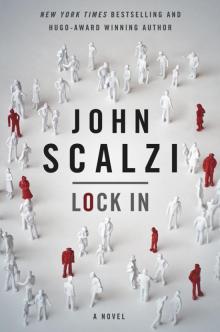 Lock In
Lock In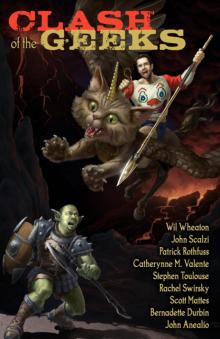 Clash of the Geeks
Clash of the Geeks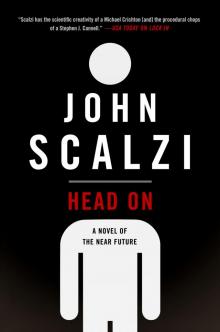 Head On
Head On The Dog King
The Dog King Old Man's War Universe: Short Stories
Old Man's War Universe: Short Stories The End of All Things
The End of All Things Tales From the Clarke
Tales From the Clarke The Human Division
The Human Division The Android's Dream
The Android's Dream An Election
An Election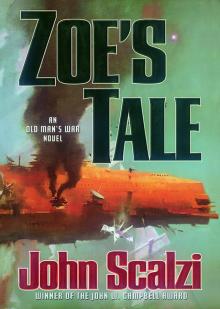 Zoe's Tale
Zoe's Tale Agent to the Stars
Agent to the Stars This Hollow Union
This Hollow Union The Gentle Art of Cracking Heads
The Gentle Art of Cracking Heads Old Man's War
Old Man's War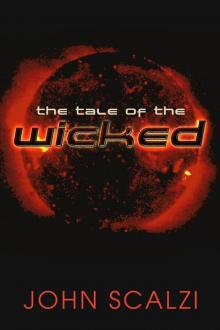 The Tale of the Wicked
The Tale of the Wicked Your Hate Mail Will Be Graded: A Decade of Whatever, 1998-2008
Your Hate Mail Will Be Graded: A Decade of Whatever, 1998-2008 Judge Sn Goes Golfing
Judge Sn Goes Golfing The Back Channel
The Back Channel The Human Division 0.5 - After the Coup
The Human Division 0.5 - After the Coup Fuzzy Nation
Fuzzy Nation The Observers
The Observers This Must Be the Place
This Must Be the Place The Last Colony
The Last Colony Unlocked: An Oral History of Haden's Syndrome
Unlocked: An Oral History of Haden's Syndrome A Voice in the Wilderness
A Voice in the Wilderness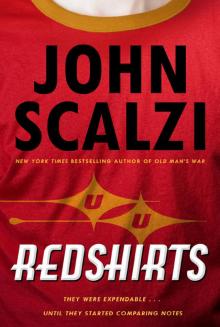 Redshirts
Redshirts The Collapsing Empire
The Collapsing Empire The Last Emperox
The Last Emperox The God Engines
The God Engines A Problem of Proportion
A Problem of Proportion THAT WAS THE MILLENIUM THAT WAS
THAT WAS THE MILLENIUM THAT WAS The B-Team
The B-Team The Sound of Rebellion
The Sound of Rebellion The President's Brain Is Missing
The President's Brain Is Missing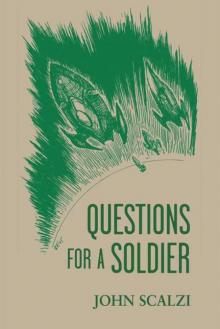 Questions for a Soldier
Questions for a Soldier Walk the Plank
Walk the Plank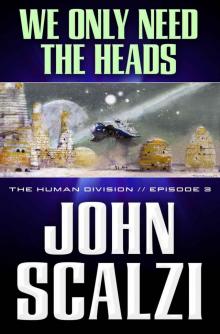 We Only Need the Heads
We Only Need the Heads How I Proposed to My Wife: An Alien Sex Story
How I Proposed to My Wife: An Alien Sex Story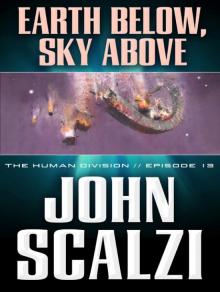 Earth Below, Sky Above
Earth Below, Sky Above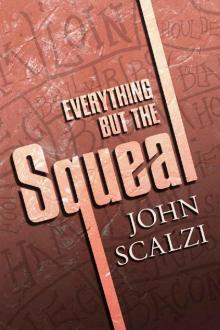 Everything but the Squeal
Everything but the Squeal Old Man’s War
Old Man’s War The Human Division #12: The Gentle Art of Cracking Heads
The Human Division #12: The Gentle Art of Cracking Heads This Must Be the Place thd-10
This Must Be the Place thd-10 A Voice in the Wilderness thd-4
A Voice in the Wilderness thd-4 The Observers thd-9
The Observers thd-9 The End of All Things: The Fourth Instalment
The End of All Things: The Fourth Instalment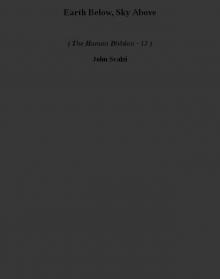 Earth Below, Sky Above thd-13
Earth Below, Sky Above thd-13 Zoe`s Tale вбиос-4
Zoe`s Tale вбиос-4 After the Coup
After the Coup Miniatures: The Very Short Fiction of John Scalzi
Miniatures: The Very Short Fiction of John Scalzi The Last Colony вбиос-3
The Last Colony вбиос-3 Tales From the Clarke thd-5
Tales From the Clarke thd-5 Old Man's War omw-1
Old Man's War omw-1 The Human Division #8: The Sound of Rebellion
The Human Division #8: The Sound of Rebellion The Ghost Brigades omw-2
The Ghost Brigades omw-2 The Sagan Diary (old man's war)
The Sagan Diary (old man's war) The Sound of Rebellion thd-8
The Sound of Rebellion thd-8 The Human Division 13 - Earth Below, Sky Above
The Human Division 13 - Earth Below, Sky Above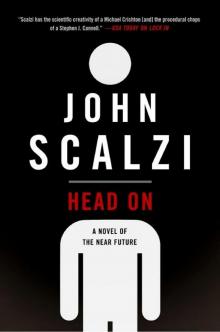 Head On_A Novel of the Near Future
Head On_A Novel of the Near Future The End of All Things: The First Instalment
The End of All Things: The First Instalment The B-Team thd-1
The B-Team thd-1 The Back Channel thd-6
The Back Channel thd-6 Walk the Plank thd-2
Walk the Plank thd-2 The Human Division #9: The Observers
The Human Division #9: The Observers The End of All Things: The Third Instalment
The End of All Things: The Third Instalment The Human Division #10: This Must Be the Place
The Human Division #10: This Must Be the Place The End of All Things #2: This Hollow Union
The End of All Things #2: This Hollow Union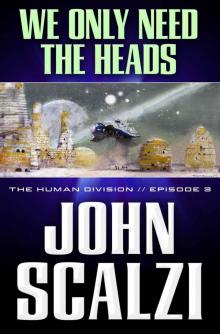 We Only Need the Heads thd-3
We Only Need the Heads thd-3 Metatropolis
Metatropolis The Dog King thd-7
The Dog King thd-7 The Consuming Fire (The Interdependency)
The Consuming Fire (The Interdependency)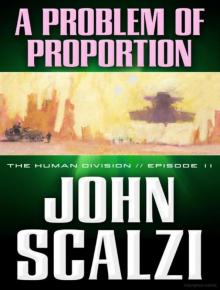 The Human Division #11: A Problem of Proportion
The Human Division #11: A Problem of Proportion